#Prehistoric Planet Episode Five
Text
I ABSOLUTELY LOVE THIS GUY, GOD DAMN IT
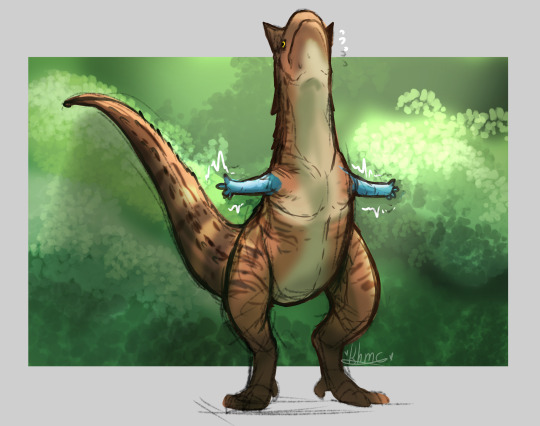
LOOK AT HIM AND HIS LITTLE AND USELESS ARMS
#Prehistoric Planet#Carnotaur#I LOVE THE CARNOTAUR#LOOK his little arms!!!!#poor buddy He couldn't get a date :(#Prehistoric Planet Episode Five#dinosaur doodle#carnotaur doodle#my art#Koumouby's art
14K notes
·
View notes
Text
Prehistoric Planet is the new love of my life.
#apologies to matt amodio the previous love of my life#but are you five episodes of beautifully animated dinosaurs#narrated by my hero david attenborough?#that's what i thought#prehistoric planet
6 notes
·
View notes
Text
Something unexpected that I really love about Prehistoric Planet is how it stays in a single period in time and explores it, rather than trying to cover the entire Mesozoic and show the world changing. If you showed an alien the programme with the intro cut out and the title censored, they probably would never even guess it was a show about a distant time in Earth’s past. In just being a wildlife documentary that happens to be set 66 million years ago, it’s showing the Maastrichtian world as a living, full-formed, very real world that existed for an unbelievably long time, rather than a phase in an even longer evolutionary process. Now don’t get me wrong, I love wide sweeps of evolutionary history like Walking With Dinosaurs too, but Prehistoric Planet’s vibes are very different and I never knew I needed them. In fact, I’m really hoping we won’t even see a trace of the meteorite in episode five. Let me just go on a little tangent to really get into why.

This is Trix the T. rex. I saw her in the Naturalis natural history museum. She lived and died 67 million years ago. Now, it is very easy for me to see that date and be filled with a sense of impending disaster. ‘Just before the end’ is a thought that quickly appears. But when you really think about it, that’s ludicrous. Trix lived her life, and then after she died her species continued to thrive for a million years. There’s thrice as much time between her and the Tyrannosauruses who died in the K-Pg extinction as there is between me and the first members of my species! And as for the thousands of years of recorded human history, those are a mere drop in that sea of time. Those years didn’t pass any faster back then than they do now, nor were they any less real. There were just as many moments in any one of those thousand millennia between Trix and the meteorite as there were in the millennium between me and Basil the Bulgar-slayer. If a wizard told you your species and your world would continue to thrive for a million years before eventually most of your clade would get wiped out by a terrible catastrophe, would you see your world as a doomed and temporary one about to go over a precipice? I think I would be delighted to know we have such a vast sea of time left.
This got longer and more philosophical than I expected, but the point is that I love the focus on the Maastrichtian as a diverse, living world, rather than the last age of the Mesozoic. We don’t know whether Prehistoric Planet is set a million, fifty thousand, or nine hundred years before impact, and it doesn’t really matter either. Even though all those dates are, geologically speaking, so close to the end of the Cretaceous we could barely tell the difference between them, they all have more time left than any of the animals can possibly conceive of. None of the animals we see in Prehistoric Planet have ever seen a Stegosaurus, and none of them will die as a consequence of a meteorite striking the Earth.
#prehistoric planet#dinosaur#tyrannosaurus#vicky gets emotional and philosophical about dinosaurs#extinction#vicky's vritings
3K notes
·
View notes
Video
Prehistoric Planet season 2 has officially been announced!
“Prehistoric Planet will be back for a second season. Apple TV+ has renewed the award-winning natural history series from executive producers Jon Favreau and Mike Gunton and BBC Studios Natural History Unit (Planet Earth). Narrated by David Attenborough, the five-episode second season will premiere globally in a five-day week-long event beginning May 22 on Apple TV+.”
via Deadline.com
#Palaeoblr#Dinoblr#Prehistoric Planet#Dinosaurs#Mesozoic#Prehistoric#video#Carnotaurus#Theropod#Dinosaur#Cretaceous#Extinct
358 notes
·
View notes
Text
I would like to offer this resource for therians, an extensive list of all of Sir David Attenborough’s nature documentaries that are available on soap2day, and a full list of what species* they each (notably, prominently) feature the natural behaviors of, separated by episode, and omitting species that were only shown dead, juvenile or being predated on. This took me a while (I have been working on it since Prehistoric Planet’s release) because I did in fact have to watch every single series in full in order to list all the species and the episodes are around 50 minutes long, but enjoy.
Long post ahead:
Most of these shows have closed captioning, which is why I’ve picked soap2day. Planet Earth is the only one that doesn’t. I did not include Dynasties and Dynasties II because each episode only features one species.
Thank you to Birch (@ambiguousmutt) for his help (he watched about half of the episodes) so I didn’t have to do it individually. Credit goes to him as well.
*Sometimes Attenborough doesn’t say the specific species and I was too busy trying to get through the episodes to identify it. In those cases I just put the most specific name I could.
Planet Earth
Episode one (From Pole to Pole): emperor penguin, polar bear, caribou, arctic grey wolf, Amur leopard, six-plumed bird-of-paradise, superb bird-of-paradise, great white shark, African elephant, African buffalo, lechwe, baboon, African wild dog
Episode two (Mountains): gelada, walia ibex, Ethiopian wolf, guanaco, cougar, grizzly bear, markhor, snow leopard, golden eagle, grey wolf, panda, golden snub-nosed monkey, red panda, demoiselle crane
Episode three (Fresh Water): giant salamander, grizzly bear, smooth-coated otter, Nile crocodile, dolphin fish, midge, Amazon river dolphin, dorado, piranha, spectacled caiman, crab-eating macaque, snow goose
Episode four (Caves): wrinkle-lipped free-tailed bat, cockroach, bat hawk, cave swiftlet, yellow-red rat snake, Texas blind salamander
Episode five (Deserts): Bactrian camel, dromedary camel, red kangaroo, fennec fox, guanaco, long-nosed bat, Nubian ibex, flat lizard, lion, African elephant, locust
Episode six (Ice Worlds): snow petrel, Antarctic petrel, south polar skua, humpback whale, emperor penguin, eider, muskox, arctic grey wolf, polar bear, little auk, arctic fox
Episode seven (Great Plains): Mongolian gazelle, red-billed quelea, wildebeest, snow goose, arctic fox, arctic grey wolf, bison, wild ass, Tibetan fox, pygmy hog, African elephant, lion, baboon
Episode eight (Jungles): magnificent bird-of-paradise, spider monkey, howler monkey, siamang gibbon, gliding tree frog, colugo, red crab spider, African elephant, chimpanzee
Episode nine (The Shallow Seas): humpback whale, multiple corals, banded sea krait, trevally, dugong, bottlenose dolphin, Socotra cormorant, salp, comb jelly, sea lion, dusky dolphin, sea urchin, sunflower starfish, short-tailed stingray, great white shark, king penguin, fur seal
Episode ten (Seasonal Forests): Eurasian lynx, moose, crossbill, wolverine, western capercaillie, pine marten, great grey owl, pudu, kodkod, mandarin duck, cicada, red deer, Amur leopard, tiger, mouse lemur
Episode eleven (Ocean Deep): whale shark, oceanic whitetip shark, common dolphin, Cory's shearwater, manta ray, sea spider, vampire squid, spider crab, unnamed deep sea eel, giant isopod, chambered nautilus, Pacific spotted dolphin, mola mola, frigatebird, sailfish, blue whale
Planet Earth II
Episode one (Islands): pygmy three-toed sloth, Komodo dragon, sifaka, marine iguana, Galapagos racer, Buller's albatross, fairy tern, Christmas Island red crab, yellow crazy ant, chinstrap penguin
Episode two (Mountains): Nubian ibex, red fox, golden eagle, grizzly bear, bobcat, flamingo, mountain viscacha rat, snow leopard
Episode three (Jungles): spider monkey, flying lizard, sword-billed hummingbird, river dolphin, jaguar, glass frog, paper wasp, click beetle, red bird of paradise, Wilson's bird of paradise, indri
Episode four (Deserts): lion, Harris's hawk, shrike, locust, sand grouse, pale chanting goshawk, feral mustang, golden mole, desert long-eared bat, darkling beetle, Namaqua chameleon
Episode five (Grasslands): saiga antelope, lion, harvest mouse, carmine bee-eater, Kori bustard, African elephant, serval, Jackson's widowbird, grasscutter ant, compass termite, giant anteater, bison, red fox, arctic grey wolf
Episode six (Cities): langur, peregrine falcon, leopard, European starling, great bowerbird, raccoon, rhesus macaque, spotted hyena, wels catfish
Our Planet
Episode one (One Planet): lesser flamingo, orchid bee, golden-collared manakin, red-capped manakin, blue manakin, cormorant, booby, common dolphin, shearwater, African wild dog, timber wolf
Episode two (Frozen Worlds): gentoo penguin, wandering albatross, narwhal, Pacific walrus, humpback whale, orca, leopard seal, polar bear
Episode three (Jungles): lowland gorilla, forest elephant, black sicklebill, twelve-wired bird-of-paradise, western parotia, mountain treeshrew, Philippine eagle, black spider monkey, leafcutter ant, Sumatra orangutan, velvet worm
Episode four (Coastal Seas): northern fur seal, compass jellyfish, giant trevally, mobula ray, Atlantic stingray, bottlenose dolphin, grey reef shark, whitetip reef shark, sea otter, California sheephead wrasse, Steller's sea lion, bald eagle, humpback whale, Guanay cormorant, Inca tern, Peruvian booby, South American sea lion
Episode five (From Deserts to Grasslands): Socotran cormorant, Arabian leopard, Arabian oryx, African elephant, cheetah, bison, Alcon blue butterfly, saiga, Przewalski's wild horse, tiger
Episode six (The High Seas): blue whale, spinner dolphin, mobula ray, oarfish, anglerfish, bristle worm, giant petrel, black-browed albatross, wandering albatross, bluefin tuna, sea lion, humpback whale
Episode seven (Fresh Water): Australian pelican, torrent duck, grizzly bear, manatee, giant mayfly, common kingfisher, osprey, jaguar, callipterus cichlid, Siamese fighting fish, hippopotamus, lion, African elephant, sandhill crane
Episode eight (Forests): Siberian tiger, bald eagle, rough-skinned newt, great hornbill, African elephant, African wild dog, fossa, gray mouse lemur
A Perfect Planet
Episode one (Volcano): lesser flamingo, marabou stork, Galápagos land iguana, vampire ground finch, Aldabra giant tortoise, North American river otter, coyote, Kamchatka brown bear, wildebeest
Episode two (The Sun): yellow-cheeked gibbon, fig wasp, arctic grey wolf, wood frog, garter snake, arctic fox, Saharan silver ant, golden snub-nosed monkey, sooty shearwater, humpback whales
Episode three (Weather): straw-colored fruit bat, fire ant, Amazonian giant river turtle, desert rain frog, Bactrian camel, Christmas Island red crab, carmine bee-eater, Nile crocodile, African fish eagle, hippopotamus
Episode four (Oceans): common dolphin, marine iguana, flightless cormorant, flamboyant cuttlefish, eider, bottlenose dolphin, lemon shark, manta ray, blacktip reef shark, trevally, rockhopper pengin, Eden's whale
Episode five (Humans): none
Life
Episode one (Challenges of Life): bottlenose dolphins, cheetah, panther chameleon, orca, brown-tufted capuchin, stalk-eyed fly, hippopotamus, Clark's grebe, giant Pacific octopus, strawberry poison-dart frog, leopard seal, orangutan
Episode two (Reptiles and Amphibians): pebble toad, caiman, basilisk, Brazilian pygmy gecko, panther chameleon, Namaqua chameleon, red-sided garter snake, collared iguana, hog-nosed snake, horned lizard, sea krait, African bullfrog, Komodo dragon
Episode three (Mammals): Weddell seal, elephant shrew, aye-aye, caribou, straw-colored fruit bat, lion, spotted hyena, polar bear, brown-nosed coati, meerkat, African elephant, humpback whale
Episode four (Fish): sailfish, flying fish, weedy sea dragon, convict fish, sarcastic fringehead, mudskipper, Hawaiian freshwater goby, hippopotamus, barbel, silvertip shark, clownfish, sea lion, ragged tooth shark, multiple snapper, whale shark
Episode five (Birds): spatuletail hummingbird, lammergeier, red-billed tropicbird, magnificent frigatebird, red knot, horseshoe crab, lesser flamingo, chinstrap penguin, great white pelican, Clark’s grebe, sage grouse, Vogelkop bowerbird
Episode six (Insects): Darwin’s beetle, unnamed damselfly, monarch butterfly, alkali fly, Wilson’s phalarope, oogpister beetle, mongoose, bombardier beetle, honey bee, black bear, Japanese red bug, Dawson’s bee, grass cutter ant
Episode seven (Hunters and Hunted): ibex, short-tailed stoat, brown bear, Ethiopian wolf, California ground squirrel, star-nosed mole, cheetah, red fox, greater bulldog bat, bottlenose dolphin, Bengal tiger, rattlesnake, orca
Episode eight (Creatures of the Deep): Pompeii worm, Humboldt squid, nemertean worm, moon jelly, fried egg jellyfish, spider crab, stingray, cuttlefish, giant Pacific octopus, sunflower sea star, king crab, cleaner shrimp
Episode nine (Plants): monarch butterfly, purple-throated carib hummingbird
Episode ten (Primates): Hamadryas baboon, Japanese macaque, lowland gorilla, spectral tarsier, phayre's leaf monkey, ring-tailed lemur, Sumatra orangutan, chacma baboon, white-faced capuchin, brown-tufted capuchin, western chimpanzee
Blue Planet II
Episode one (One Ocean): bottlenose dolphin, tuskfish, tern, giant trevally, mobula ray, false killer whale, Asian sheepshead wrasse, orca, humpback whale, walrus
Episode two (The Deep): sea toad, Venus’ flower basket, unnamed shrimp, ethereal snailfish, cock-eyed squid, pyrosome, barrel-eyed fish, unnamed siphonophore, yeti crab, Humboldt squid, fangtooth fish, sixgill shark, scabbardfish, zombie worm
Episode three (Coral Reefs): broadclub cuttlefish, coral grouper, day octopus, multiple corals, green turtle, bottlenose dolphin, manta ray, bobbit worm, saddleback clownfish, marbled grouper, grey reef shark
Episode four (Big Blue): spinner dolphin, yellowfin tuna, mobula ray, sailfish, sperm whale, sea turtle, blue shark, great white shark, multiple jellyfish, Portuguese man o' war, whale shark, wandering albatross, shortfin pilot whale
Episode five (Green Seas): Garibaldi, Australian giant cuttlefish, weedy seadragon, common octopus, pyjama shark, sea otter, tiger shark, smooth stingray, zebra mantis shrimp, common dolphin, humpback whale
Episode six (Coasts): Pacific leaping blenny, king penguin, southern elephant seal, Sally Lightfoot crab, Galápagos sea lion, ochre starfish, clingfish, chain moray eel, Atlantic puffin, arctic skua
Episode seven (Our Blue Planet): none
Prehistoric Planet
Episode one (Coasts): Tyrannosaurus rex, Tethydraco, Phosphatodraco, Tuarangisaurus, Mosasaurus hoffmannii, pycnodont fish, ammonites, Kaikaifilu
Episode two (Deserts): Dreadnoughtus, Tarbosaurus, Velociraptor, Mononykus, Barbaridactylus, Secernosaurus
Episode three (Freshwater): Velociraptor, Tyrannosaurus rex, Deinocheirus, Quetzalcoatlus, Masiakasaurus, Beelzebufo, elasmosaur
Episode four (Ice Worlds): dromaeosaur, hadrosaur, Ornithomimus, Olorotitan, troodontid, Antarctopelta, Pachyrhinosaurus, Nanuqsaurus
Episode five (Forests): Austroposeidon, Triceratops, Carnotaurus, Qianzhousaurus, Edmontosaurus, Atrociraptor, Anodontosaurus, Therizinosaurus, Telmatosaurus, Hatzegopteryx
The Hunt
Episode one (The Hardest Challenge): African leopard, African wild dog, Parson’s chameleon, nose-horned chameleon, African mantis, Darwin’s bark spider, Nile crocodile, Amur falcon, orca, cheetah
Episode two (Arctic): polar bear, arctic grey wolf, arctic fox, glaucous gull
Episode three (Forests): tiger, American marten, sparrow hawk, Portia spider, tarsier, harpy eagle, chimpanzee, army ant
Episode four (Oceans): blue whale, frigatebird, dorado, sargassum fish, spinner dolphin, Beroe ovata, Chiroteuthis, lionfish, black-browed albatross, sea lion, tuna, copper shark, common dolphin, Bryde's whale
Episode five (Plains): cheetah, caracal, honey badger, termite, bald eagle, lion, Ethiopian wolf, hotrod ant, spoor spider
Episode six (Coasts): bottlenose dolphin, algae octopus, sand bubbler crab, long-tailed macaque, marine otter, grizzly bear, grey wolf, peregrine falcon, orca, humpback whale
Episode seven (Conservation): none
Life In Colour
Episode one (Seeing In Color): Indian peafowl, mandrill, Costa’s hummingbird, magnificent bird-of-paradise, blue moon butterfly, fiddler crab, mantis shrimp, flamingo, poison dart frog
Episode two (Hiding In Color): Bengal tiger, langur, ptarmigan, crab spider, zebra, Cuban painted snail, blue-striped fangblenny, common waxbill, pin-tailed wydah, Augrabies flat lizard
Frozen Planet II
Episode one (Frozen Worlds): emperor penguin, orca, Pallas’s cat, Siberian tiger, grizzly bear, hooded seal, polar bear
Episode two (Frozen Ocean): polar bear, beluga, harp seal, skeleton shrimp, crested auklet, orca
Episode three (Frozen Peaks): high-casqued chameleon, japanese macaque, kea, andean flamingo, giant panda, golden eagle, andean mountain lion
Episode four (Frozen South): king penguin, Antipodean wandering albatross, blue whale, Weddell seal, chinstrap penguin, snow petrel, leopard seal, orca
Episode five (Frozen Lands): grey wolf, arctic fox, Amur leopard, Siberian tiger, painted turtl, Lapland bumblebee, snowy owl, caribou, grizzly bear
Episode six (Our Frozen Planet): none
Africa
Episode one (Kalahari): fork-tailed drongo, ostrich, black rhinoceros, Angolan giraffe, African leopard, armored ground cricket, spider wasp
Episode two (Savannah): Agama lizard, shoebill, bee-eaters and rollers, lesser flamingo, African elephant, crowned eagle, African fish eagle, martial eagle
Episode three (Congo): chimpanzee, central African rock python, Angola banana frog, African skimmer, rockfowl, African elephant
Episode four (Cape): emperor swallowtail, giant kingfish, African penguin, monkey beetle, springbok, yellow-billed kite, pied crow, ghost crab, vundu catfish, Nile crocodile, Bryde’s whale, great white shark, common dolphin
Episode five (Sahara): Grevy’s zebra, naked mole rat, barn swallow, Dromedary camel, dung beetle, crocodile, western yellow wagtail, Saharan silver ant
Episode six (The Future): none
521 notes
·
View notes
Text
I have found and watched all five episodes of Prehistoric Planet now, and...oh my God. Can we please continue depicting prehistoric life like this instead of as shrink-wrapped...whatever we’ve been doing? We finally got a documentary that depicted dinosaurs and their peers like real animals. I cried the entire time. It was beautiful.
Seeing the plumage of the feathered dinosaurs especially made me happy. It’s so nice to see that get the respect it deserves.
571 notes
·
View notes
Text
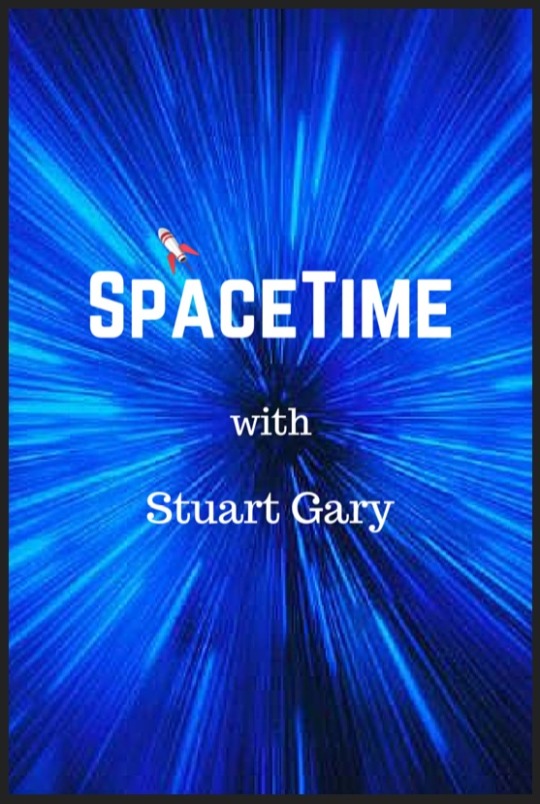
New SpaceTime out now....
Friday SpaceTime 20231222 Series 26 Episode 153
New mission for NASA’s OSIRIS-Rex spacecraft
After completing its initial seven year sample return mission to the asteroid Bennu, NASA's OSIRIS-REx spacecraft is moving on to a new mission studying the asteroid Apophis.

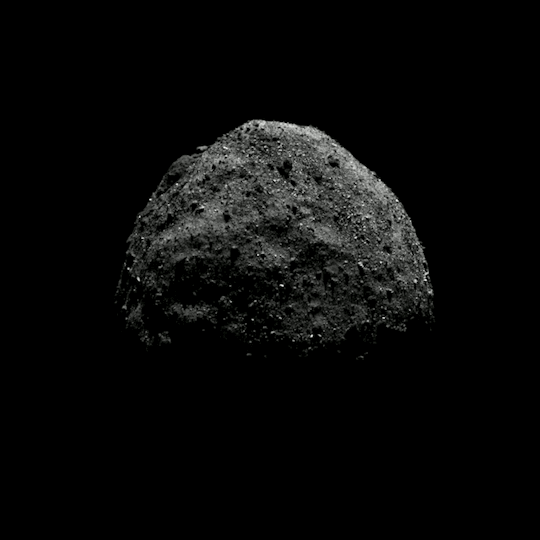




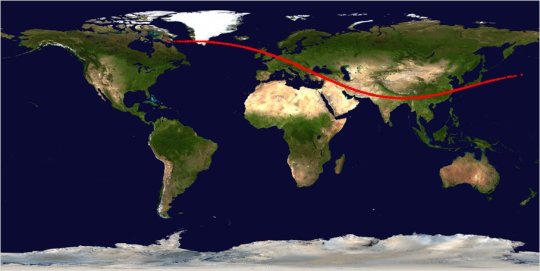

Discovery of planet too big for its Sun
Astronomers have discovered a planet that is far too massive for its host star. The finding reported in the journal Science calls into question what was previously understood about planetary formation.
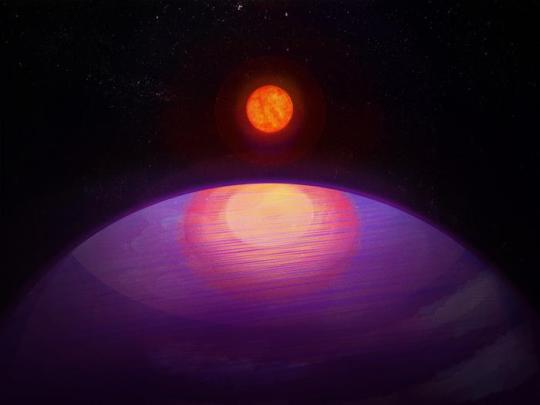

Halley's comet reaches aphelion
On Saturday, December 9th comet 1P/Halley reached aphelion – it’s most distant orbital position from the Sun.
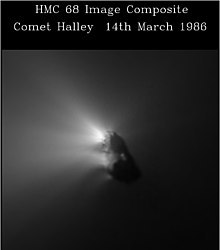

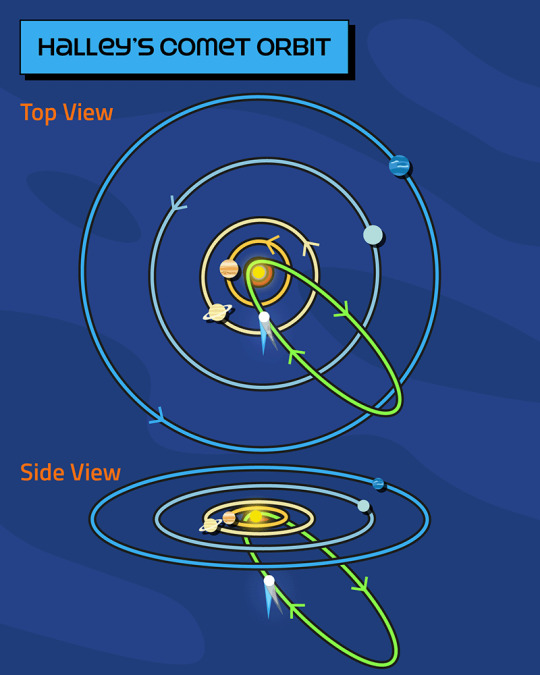






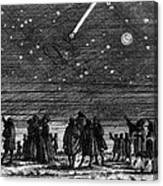
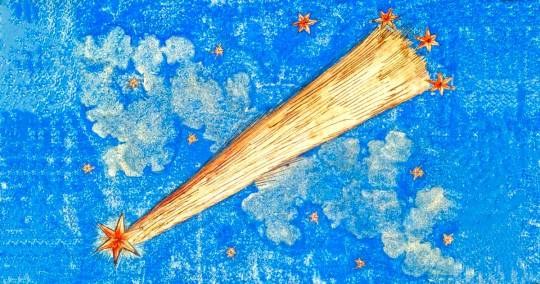
The Science Report
Diet and air pollution remain among the biggest contributors globally to heart disease.
Archaeologists have uncovered the oldest known fortified prehistoric settlement in the world.

A new study has found that Cats love to play fetch with their owners, especially if they're in charge.
Skeptics guide to Meghan Markle’s anti stress patch
SpaceTime covers the latest news in astronomy & space sciences.
The show is available every Monday, Wednesday and Friday through Apple Podcasts (itunes), Stitcher, Google Podcast, Pocketcasts, SoundCloud, Bitez.com, YouTube, your favourite podcast download provider, and from www.spacetimewithstuartgary.com
SpaceTime is also broadcast through the National Science Foundation on Science Zone Radio and on both i-heart Radio and Tune-In Radio.
SpaceTime daily news blog: http://spacetimewithstuartgary.tumblr.com/
SpaceTime facebook: www.facebook.com/spacetimewithstuartgary
SpaceTime Instagram @spacetimewithstuartgary
SpaceTime twitter feed @stuartgary
SpaceTime YouTube: @SpaceTimewithStuartGary
SpaceTime -- A brief history
SpaceTime is Australia’s most popular and respected astronomy and space science news program – averaging over two million downloads every year. We’re also number five in the United States. The show reports on the latest stories and discoveries making news in astronomy, space flight, and science. SpaceTime features weekly interviews with leading Australian scientists about their research. The show began life in 1995 as ‘StarStuff’ on the Australian Broadcasting Corporation’s (ABC) NewsRadio network. Award winning investigative reporter Stuart Gary created the program during more than fifteen years as NewsRadio’s evening anchor and Science Editor. Gary’s always loved science. He studied astronomy at university and was invited to undertake a PHD in astrophysics, but instead focused on his career in journalism and radio broadcasting. He worked as an announcer and music DJ in commercial radio, before becoming a journalist and eventually joining ABC News and Current Affairs. Later, Gary became part of the team that set up ABC NewsRadio and was one of its first presenters. When asked to put his science background to use, Gary developed StarStuff which he wrote, produced and hosted, consistently achieving 9 per cent of the national Australian radio audience based on the ABC’s Nielsen ratings survey figures for the five major Australian metro markets: Sydney, Melbourne, Brisbane, Adelaide, and Perth. The StarStuff podcast was published on line by ABC Science -- achieving over 1.3 million downloads annually. However, after some 20 years, the show finally wrapped up in December 2015 following ABC funding cuts, and a redirection of available finances to increase sports and horse racing coverage. Rather than continue with the ABC, Gary resigned so that he could keep the show going independently. StarStuff was rebranded as “SpaceTime”, with the first episode being broadcast in February 2016. Over the years, SpaceTime has grown, more than doubling its former ABC audience numbers and expanding to include new segments such as the Science Report -- which provides a wrap of general science news, weekly skeptical science features, special reports looking at the latest computer and technology news, and Skywatch – which provides a monthly guide to the night skies. The show is published three times weekly (every Monday, Wednesday and Friday) and available from the United States National Science Foundation on Science Zone Radio, and through both i-heart Radio and Tune-In Radio.
#science#space#astronomy#physics#news#nasa#esa#astrophysics#spacetimewithstuartgary#starstuff#spacetime
10 notes
·
View notes
Text

Let’s finish this!
Here we are folks. The last Prehistoric Planet episode as of May 2023. The current end of the line for the time being, and an episode not like any before. I mean, given how there were quite a few episode ideas to use from Planet Earth, an episode on Plains would’ve made more sense. I’m not against the idea of a PHP episode based around an entire continent, but North America being here… feels odd. Don’t get me wrong, it’s still a good time to behold, but it’s got so many fans scratching their heads. While I stand on the whole opinion that something like “Plains” would've fit better, it sort of makes sense. Given that most of the biomes used in Planet Earth and its sequel have been used for the previous 9 episodes, there aren’t that many compatible habitats left for PHP to use. Mountains and jungles aren;t really good places for preserving fossils like the other habitats, not alot is known about caves from the end of the Cretaceous, and it should be obvious that cities aren’t an opinion here. So it makes sense that the series is starting to go with other themes for its episodes at this point.
With all of that said, the question remains? What did I think about this last episode? Does it do a good job to close out the season? Stick around and find out, as we cap off the second tour of Maastrichtian Earth with NORTH AMERICA.
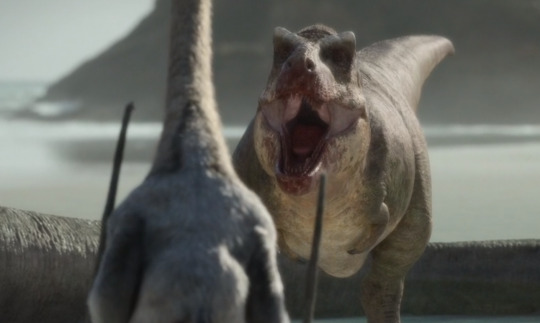
Think of the seagulls that normally pester you for fries… and then scale them up to the size of a giraffe. That’s basically what this poor guy has to go through.
The opening scene starts with a herd of Alamosaurus, which were not only the largest animals on the entire continent, but also the only species of titanosaurs there as well. As the herd plods down the beach, the focus is on a 70-year old male, straggling behind a bit. As the others carry on, the old male slowly lays down on the beach, with his rather long life coming to a peaceful end…
…As you can tell, what happened next, along with the resulting reaction from the fandom was anything but peaceful. The next day, the dead Alamosaurus attracts predators from all walks from life. From a trio of troodontids struggling to pierce through the sauropod’s thick skin, to a T. Rex who spooks the former off and easily gorges into the free meal, right to a pair of Quetzalcoatlus, who then harass and force the poor T. Rex into leaving, after pecking and honking at the guy. Alot of people got a bit uppity about this scene, as they felt that something like this wouldn’t be natural. However, looking at the mannerisms of both parties helps get a better understanding of what happens here. The first Quetzalcoaltus was hesitant on grabbing a bite from the caress while the T. Rex was present. It’s only with the second Quetz that things start to shift in their favor. Using their lighter frames, the two azhdarchids go on the offense, mobbing and harassing the T. Rex, while pecking and honking right on the theropod. That’s something that I frankly love about the PHP Quetz; Alongside their accurate mannerisms and appearance, the species gets a deep, booming HONK. Think of this entire kerfuffle like someone getting harassed by seagulls for some fries… with the main difference being that these gulls are the size of giraffes, and can easily swallow you whole if they fancy you as a snack
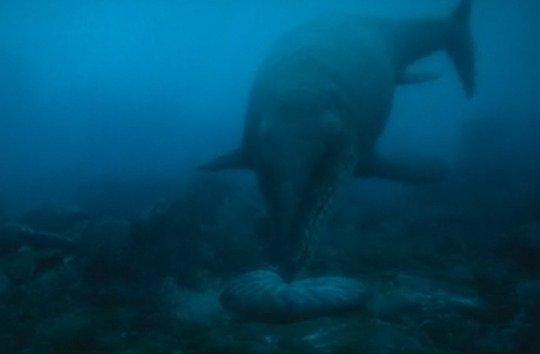
Calamari, only with the shell
Diving back into the sea for our second segment, the focus is centered on the first-ever appearance of Globidens in media. Unlike the other mosasaurs in this series, Globidens, with its name literally meaning “Globe teeth”, had rounder and blunter teeth, which was a very good tool in hunting hard-shelled prey, including the other animal of the scene; Sphenodiscus. They were a species of ammonites that were very common during this time. I even have an entire fossil of one of these creatures!

Got this lil’ beauty from a fossil shop almost five years ago
As for while the Sphenodiscus are getting themselves in the hungry eyes of the Globidens? Well, while you have eggs to place in the shallows, you gotta get in the way of predators to lay down the groundwork for the next generation. An interesting note to bring up is how the Globidens doesn’t initially eat each Sphenodiscus he catches after biting through their shells, causing them to sink to the seafloor. The goal here is to have himself a good amount of easy food to snack on in peace, even with how they only represent a tiny amount of the entire school. It helps to show how mosasaurs can be pretty clever animals, similar to how modern-day monitor lizards are very intelligent for reptiles.

Seriously, how did they not add in the fact that birds ARE dinosaurs in a scene with a non-avian dinosaur AND birds?
Going back on dry land, the episode then cuts to a large lake, cut off from nearby rivers. Due to this isolation, along with the water getting toxic due to dissolving minerals, living here can be a bit risky, unless you’re either a brine fly, or a “Styginetta”, which was an informed relative of ducks. The other major animals of the segment are a family of Pectinidon. On the hunt for some food, the chicks playfully run around for flies, with some running face-first into a whole bunch of them in a very similar manner to the Cryptile from The Future is Wild. Their father, however, has a much meatier prize in mind. The male then runs after the flock of “Styginetta” catching one of the birds in mid-air. The scene itself was good in its own right, but the only issue that I have is how it doesn’t bring up how birds are dinosaurs. Maybe they’re saving it for a later episode? I dunno.
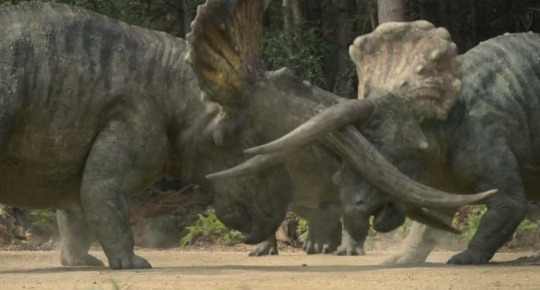
Mess with the bull, and you get the horns
We then cut to a large forest, where groups of Triceratops gather for their mating rituals. The rules here are simple; If you’ve got very large horns, the chances of getting laid are easier. And one of the males involved got’s some pretty impressive horns, a bit longer than most of the others. However, there are two issues that he has to face.
The females notice that the horns lack any wear or tear, which means that male lack any experience.
There’s literally an older male here who has horns EVEN BIGGER THAN THAT.
As many folks have pointed out ever since the trailer for Season 2 came out, the older male and his horns are based on Yoshi’s Trike, which is a specimen of Triceratops with horn cores that are nearly 4 feet long, which makes them the longest horns out of any Triceratops fossils found. And going back to the “horn core” thing, many scientists now speculate that, just like many animals alive today, dinosaurs must’ve had sheets of keratin covering over things like horns and claws. And if we’re going with that idea, it’s safe to assume that the horns of Yoshi’s Trike, as impressive as they are now, must’ve been even bigger when the animal itself was alive. And this goes for the older male, as his massive horns are a good way to see how he’s more of an experienced fighter than his younger rival, even having part of his frill gone by what I assume to be a T. Rex attack.
As you can probably imagine by this point, the first male loses, having a piece of one of his own horns be snapped off by the fight. However, this is a blessing in disguise, as the newly-gained battle scar means he’ll have a better chance of getting a mate next time.
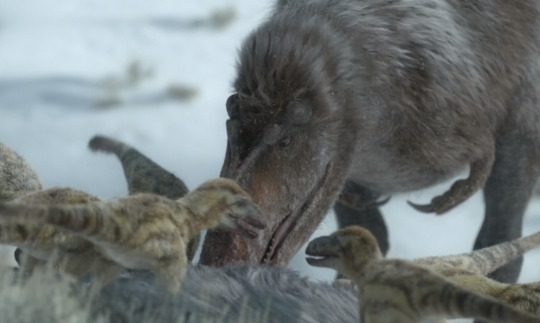
A loving mother, and her family of walking fluffballs
The last segment of not just the whole episode, but the season in general, starts with the northern wilderness. For a female Nanuqsaurus, it’s not the cold that’s the hardest part, but it’s the lack of good hiding places to spring an ambush on a flock of unsuspecting Ornithomimus that makes things a kick to the face. While this isn’t like plenty of other hunting scenes in this show, it works as a reminder that most hunts throughout the history of life fail more often. If you were a 23-feet long predator with jaws powerful enough to crunch through bone, a good hiding spot is gonna be needed to catch some dinner. Our female, having to try again after her first attempt fails, uses some rocky outcrops to catch the Ornithomimus by surprise, eventually singling a lone member of the flock. One slip of ice later, and it’s all over for the ostrich mimic.
While a meal like this is a godsend for the Nanuqsaurus, she’s also got a bunch of adorable chicks to feed. While this was a bit of a weird way to end the season, it was still a good scene.
youtube
When you have a shield for a face, getting attention is gonna be alot easier than you’d think
And we’re at the last Uncovered segment of the reviews. Obviously, I don’t have alot to say about this one, but it’s nice that the Uncovered segments were added in at the end of each episode this time. I’m not sure if I’ve said this previously, but adding in behind-the-scenes segments at the end is common for the BBC’s Natural History Unit when it comes to their shows, it works here.
And with that… we’re done! We’re finally finished with Prehistoric Planet season 2! While it took me months to get to each episode, I had alot of fun with these reviews. As weird as the idea of this show getting a season 2 just a year after the first may seem weird, but you gotta remember; This entire project started back in 2019, and even before that, it’s been stated that the idea of the series itself came up more than a decade ago. While it could hypothetically take a few months into the new year to see if we’ll ever get Season 3, but if that happens, that whole “Maasrichtian trilogy” idea that I’ve been spouting off may actually come to pass! Only time will tell.
And as always, thanks to everyone who’s liked and read these silly ramblings of mine. Things like my other projects, life stuff getting in the way, and other such things have gotten in the way, but after more than 5 months, I’m happy to say that this safari tour is over. As for what I have planned next? I’m hoping to get a few more art pieces done before the year ends, and I have a few ideas for more articles in the same time frame. Obviously, my ideas for what PHP season 3 could be like are still in the works, as I’m hoping to have it released before the end of this month (As of me writing this). I also got some other ideas for consideration, like what I wanna see in my own dream idea for a Pokemon game, some more possible ideas for my Johnny Test reboot idea, and maybe even a sort of mini-retrospective on the much-mangled Walking with Dinosaurs movie from 2013, just in time for its 10th anniversary this December!
…Yeah, that film came out 10 years ago… God, I feel old.
ANYHOO! Thanks for reading, stay tuned for what I’ve got planned next, and keep on celebrating the legacy of our Prehistoric Planet

(Also, Happy Thanksgiving! Just don't let a T. Rex catch you when you're cooking that turkey, lest you end up as the turkey dinner)
5 notes
·
View notes
Note
So excited for Prehistoric Planet! Gonna watch it tonight and I'll be vibrating with anticipation all day!
Love that they have the bonus content for seeing the science behind each episode. Definitely going to watch that too
Absolutely!!! I'm still holding out hope for a full-length behind the scenes episode cause I wanna see every detail of how they made this beautiful show! But I'm really glad that they have these five minute bonus clips to teach folks a bit more about how evidence-based behavioural speculation works!
81 notes
·
View notes
Text
Micro-Reviews: Stuff I enjoyed with my Apple+ free trial, Part I
Recently had the chance to spend a couple months with Apple’s streaming service, and while I’m not going to keep an ongoing subscription, I did find several shows that I watched and enjoyed in their entirety and would recommend! The ones in this post are all documentary-related, and I think several would be worth having a one-month subscription to watch, at least.

Prehistoric Planet
Fantastic dinosaur documentary, narrated by David Attenborough, with the more current (presumably) understanding of prehistoric creatures’ lives and appearances--including feathers! I know feathered dinosaurs aren’t new, but I feel like it’s taken a while for feathers to make their way into moving depictions, y’know?
Anyway, it’s very fun, because dinosaurs are very fun. The creatures are photorealistic, and the backgrounds were so realistic I literally couldn’t even guess if they were all CG, or if they used real-life shots and placed the creatures in.
I know I’m not talking much about the content, because I can’t find much to say other than fantastic, absolutely worth watching. It combines a bunch of my favorite things: dinosaurs, BBC documentaries, and David Attenborough narration.

Fireball: Visitors From Darker Worlds
Another one for the documentary and science lovers. At an hour and a half, I broke it up into multiple sessions. This is about “the cultural, spiritual, and scientific impact of meteorites” and their craters.
Narrated and written by Werner Herzog, whose narration continually delighted me because it’s a bit like a monologue from a conversational partner. We’re introduced to a South Korean antarctic station, and as the camera walks trough the spacious, sunlight rooms, Herzog recounts how nearby, Robert Scott’s men spent the winter in tiny cave.
As we watch people prepare food in a shiny modern kitchen, he recounts how the historical men dreamt of banquets ripped away from their forks; one man who managed to eat in his dream was “rightfully hated” by his comrades. [heavy pause] But we’re not here for lobster and kimchi. Anyway, about the science...
Later, we get a digression about how delighted he is by some footage of someone walking into the background of a camera shot and doing some work on the ground, against the rules of good filmmaking.
Topic to tangent back to topic again. I suspect this is what people experience in conversation with me. The subject matter was interesting, but Herzog’s narration himself was so much fun that when I discovered he had previously created a documentary about people living in Antarctica, I immediately placed a library hold on it.
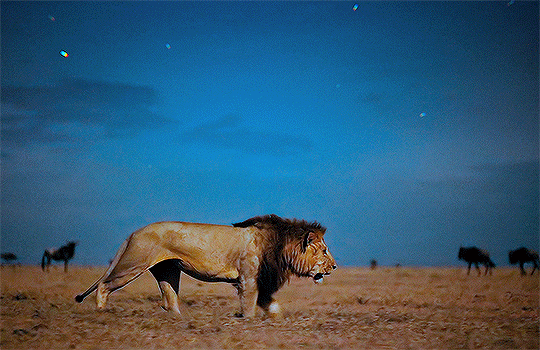
Earth at Night in Color
Absolutely fascinating. Using state-of-the-art cameras that are able to film at night not in the grey-and-green-toned night vision we’re used to, but in color that, if you didn’t remember the name of the show, would have you guessing they’re filming in the day, or maybe dusk at most. If you’re the kind of person who likes nature documentaries, you’ll like this. I also enjoyed the “behind the scenes” bits at the end of each episode that show how the crew filmed things, or issues they ran into. I am continually amazed at nature documentary camera people--the episode on Patagonia noted that the crew walked a collective 5000 kilometers.
Also notable is learning via Tom Hiddleston’s narration that apparently the British way of pronouncing puma is pyoo-mah, which led me on a google rabbit trail that ended in a linguist’s blog post from 2006.
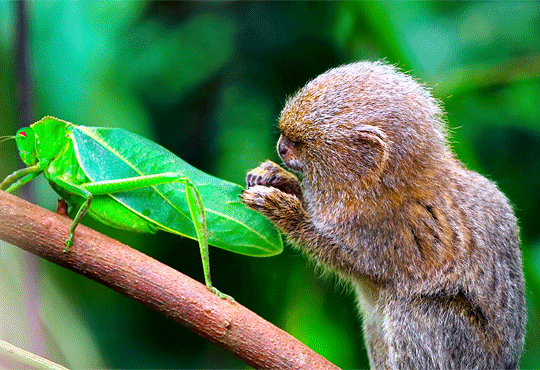
Tiny World
A nature docuseries that spotlights small creatures, narrated by Paul Rudd because he played Ant Man, which is hilarious. (The narration is perfectly fine, but reading the rationale in an interview cracked me up.)
I was continually amazed and astounded and the close-up footage they got of tiny creatures--at least with pumas (*Tom Hiddleston voice* pyoo-mahs) you can film them from a distance! Each episode focused on multiple creatures--more than five each time--so you get a good look at a lot of things. “Tiny” here ranges from ants and other teeny insects to small lizards, shrews, geckos and more.
They did a great job keeping a light, inquisitive tone--it’s not a comedy and you’ll also find yourself fearing for a hummingbird in the middle of a Caribbean hurricane, but my absolute favorite part was the episode with peacock spiders (tiny and cute and colorful), the males of which do a courtship dance. Tiny World made the fantastic decision to play The Macarena to accompany this.
#Prehistoric Planet#Earth at Night in Color#Tiny World#Fireball: Visitors from Darker Worlds#reviews#recommendation#original
21 notes
·
View notes
Text
I really don't get it!!!! Why oh why Prehistoric planet can't focus on one species more than five minutes at a time????? For example I know everyone would eat up a whole episode of just rexes!!!!! I want to get to know the animals!!!!! I want proper stories and not just quick flashes that are basically teasers!!!!! Come oooon!!!!
2 notes
·
View notes
Note
Got a Prehistoric Planet review for us? I'm glad you enjoyed it.
I don't know if I have enough to say to make a whole review, but I love it a lot! It reminded me of why I love dinosaurs and how wondrous they can be. It even allowed me to forget the cynicism that years of seeing how the internet engages with dinosaur media has instilled in me. For five glorious episodes I was able to enjoy dinosaurs with the pure innocence and fascination I felt as a child.
I mean, it won't last, people are already finding ways to rip on it for being inaccurate/too accurate/otherwise problematic on tweeter and other hellsites, but still! It made me feel things and it was great! I look forward to revisiting it the way I do my other favorite bits of dinosaur media while also doing everything I can to avoid seeing other people on the internet discuss it once the conversation inevitably turns ugly.
22 notes
·
View notes
Text
Sleeping Beauty Spring: "La Leggenda della Bella Addormentata ("The Legend of Sleeping Beauty") (1998 Italian animated series)
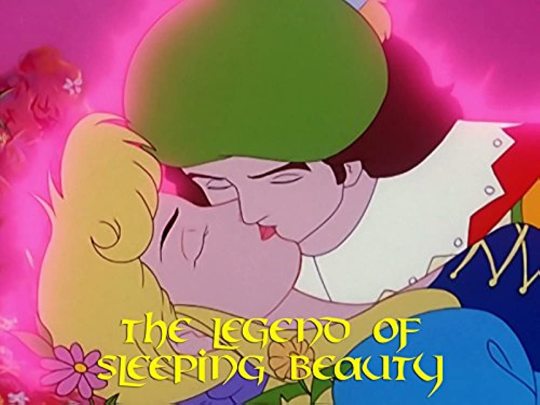
The Italian animation company Mondo TV was the co-producer (with Japan's Tatsunoko Production Co.) of two enjoyable animated series, The Story of Cinderella and The Legend of Snow White. I hoped that this 26-episode series would be similar to those two Japanese co-productions: an expansion of the classic fairy tale that not only added new adventures, but fleshed out the characters more fully than most retellings do. Unfortunately, Mondo TV was also the producer of much cheaper animated products, such as the notorious feature The Legend of the Titanic, which has a giant octopus save the ship and all its passengers in the end. While much less offensive, The Legend of Sleeping Beauty is closer in quality to that Titanic film than to the Cinderella and Snow White series. But I'm sure that some people have fond memories of this series from their childhood. It's most definitely an interesting series, and not without charm.
The series begins like a typical Sleeping Beauty retelling, with a medieval fantasy kingdom celebrating the birth of Princess Kindra. But it quickly takes an unusual turn. The magical beings who bring gifts to the baby aren't fairies, but "Cavaliers": five male superheroes themed to the elements of Earth, Air, Fire, Water, and Light. ("The word "superheroes" isn't used, but that's effectively what the Cavaliers are – they look like a cross between Captain Planet and the Fantastic Four.) But the celebration is crashed by an evil sorceress, Countess Maya, who curses Kindra to prick her finger on her sixteenth birthday and fall into an eternal sleep, as will the entire kingdom, leaving the forces of evil free to conquer the world. But the Cavalier of Light alters the curse so that someday a prince will wake Kindra with a kiss and evil will be vanquished.
On the same day, in a different kingdom, the birthday of the preteen Prince Rakhal is celebrated. But that celebration is also interrupted by villains: Barbarios, Thanatos, Sterminios, and Grievios, four sorcerers who serve Countess Maya, and their armies of monsters and ghouls. They come to kill Prince Rakhal, because according to legend, he's "the Child of the Fifth Prophecy," destined to conquer the forces of evil. But Rakhal's constant companion, a saber-toothed snow leopard named Cordall, spirits the young prince away. Not to be defeated, Barbarios curses Rakhal to stay a child forever. But once again, the five Cavaliers appear, and the Cavalier of Light alters the curse so that when Rakhal kisses the sleeping Princess Kindra and wakes her, his own spell will break too.
Cordall takes Rakhall to his own home country, the Forgotten Lands: a place populated by dinosaurs and other prehistoric creatures, with great knowledge of magic and advanced technology such as electricity, ruled by a kindly troll name Chaka. There, for sixteen years (a timespan glossed over quickly), the unaging Rakhal is educated and hones his unique supernatural powers, which include astral projection and seeing the future. He also befriends a quartet of mischievous young prehistoric creatures who become surprisingly valuable helpers. Their first grand quest is to rescue a good sorceress named Princess Aurora from a magical imprisonment. Yet all the while, Maya, her cohorts, and their armies seek to kill them.
Meanwhile, in the human realm, Princess Kindra succumbs to Maya's curse, and when she falls asleep, her entire kingdom turns to stone. But a neighboring kingdom of friendly animals, ruled by an amiable frog named Prince Birion, comes to the rescue. They lay her to rest on a flowery bier in the forest, then send forth their bravest knight, an arrogant yet heroic dog named Sir Sean Braveheart, and his "steed," a giant, fast-moving snail named Sluggard (whose cheeky attitude makes him my personal favorite character). Their task is to join Prince Rakhal and the army of dinosaurs he comes to lead, and to take them to Kindra so Rakhal can break the spell. Of course in the end, after many adventures and battles, they succeed. Maya and her cohorts are sealed in the earth by Princess Aurora. Kindra awakens, her kingdom un-petrifies, Rakhal becomes a grown man, and they marry and give birth to a son, who will become the hero of the sequel series, Winner and the Golden Child.
It goes without saying that this series is a "fantasy kitchen sink." With dinosaurs, talking animals, superheroes, sorcerers and sorceresses, trolls, fairies, monsters, and more, its sheer number of fantastical creatures and types of magic is head-spinning. Also, Prince Rakhal is a classic "Gary Stu" hero: a Chosen One with immense magical powers that grow as the plot demands, yet a bland personality. Still, this is a lively and colorful action-adventure series that engages despite (and partly because of) its oddities. It was probably a mistake to frame it as a Sleeping Beauty adaptation, however. Princess Kindra is more or less a non-entity, who falls asleep very early on and only serves as Rakhal's reward in the end. If the series had been a stand-alone story titled The Legend of Prince Rakhal, and if Kindra had been turned to stone with her parents instead of pricking her finger and falling asleep, it might have worked better.
Though this fever dream of a series barely counts as a version of Sleeping Beauty, it's a strangely charming "wild ride" all the same, and I don't regret watching it.
@ariel-seagull-wings, @thealmightyemprex, @faintingheroine, @the-blue-fairie, @reds-revenge, @themousefromfantasyland, @fairytaleslive, @paexgo-rosa, @autistic-prince-cinderella, @comma-after-dearest, @thatscarletflycatcher
#sleeping beauty spring#the legend of sleeping beauty#la leggenda della bella addormentata#1998#animated series#animation#mondo tv#italy
4 notes
·
View notes
Text
Prehistoric Planet review: #5 - Freshwater
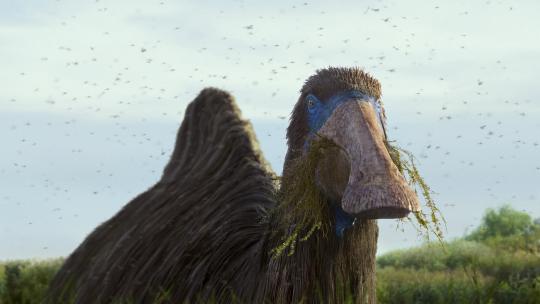
Prehistoric Planet 2 is almost upon us, and I've been working on reviews for the five episodes of the first season from decent to best to post each week before the premiere on May 22. This is the best prehistoric documentary show I've seen in a long time. It takes me back to the days when shows like the Walking With series, When Dinosaurs Roamed America, and Prehistoric Park once roamed the television, but with up-to-date representation of the creatures that lived 66 million years ago through phenomenal visual effects, great cinematography, excellent music by Hans Zimmer, and fantastic narration by David Attenborough.
"Freshwater" has some memorable moments involving Velociraptors, Tyrannosaurus, Deinocheirus and Beelzebufo, but it's the weakest episode in my opinion over the confusion of its title. I get that freshwater brings everything together and we, animals and plants rely on it, but it doesn't focus much on animals that would live in it. Like if this was an episode for a modern animal series, we'd see beaver, crocodiles, frogs, etc. Deinocheirus and Beelzebufo are perfect examples of it, but that's pretty much it. Also, the ending scene it too similar to the first episodes ending showcasing elasmosaurs exploring an estuary following fish to where fresh and saltwater collide. The imagery of that was cool though. 3/4 stars.
2 notes
·
View notes
Text

I posted 1,991 times in 2022
431 posts created (22%)
1,560 posts reblogged (78%)
Blogs I reblogged the most:
@paleontologylife
@kt--extinction
@chloepleasestopdying
@1dinodaily
@tippenfunkaport
I tagged 1,961 of my posts in 2022
Only 2% of my posts had no tags
#dinosaur - 596 posts
#paleoart - 574 posts
#the owl house - 374 posts
#toh - 373 posts
#theropod - 329 posts
#toh spoilers - 283 posts
#paleoblr - 280 posts
#luz noceda - 184 posts
#amity blight - 170 posts
#cretaceous - 168 posts
Longest Tag: 135 characters
#the other stegosaur came from a happy meal i ended up with after i was unable to complete a delivery for mcdingdongs a couple years ago
My Top Posts in 2022:
#5
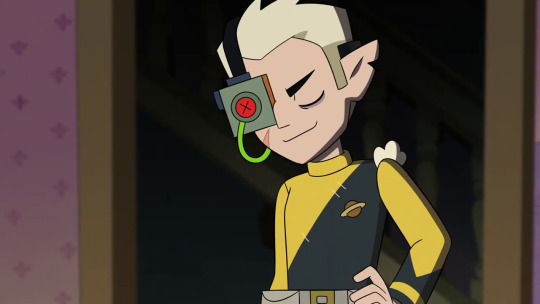

See the full post
1,090 notes - Posted October 21, 2022
#4


Guzma is my hero. I’ve always wanted to be able to respond to trainers who wanna battle like this.
1,511 notes - Posted June 3, 2022
#3
So Prehistoric Planet is amazing. A random thought I had near the end is that we actually saw almost no dinosaurs in this episode! Just the T. rex beach trip at the start, the rest was all pterosaurs, marine reptiles, ammonites, and other friends. What a flex for a Mesozoic documentary to in its very first episode go ‘Actually we don’t even need to talk about dinosaurs, all the other amazing creatures that lived alongside them can carry an episode on their own’.
1,718 notes - Posted May 23, 2022
#2
Something unexpected that I really love about Prehistoric Planet is how it stays in a single period in time and explores it, rather than trying to cover the entire Mesozoic and show the world changing. If you showed an alien the programme with the intro cut out and the title censored, they probably would never even guess it was a show about a distant time in Earth’s past. In just being a wildlife documentary that happens to be set 66 million years ago, it’s showing the Maastrichtian world as a living, full-formed, very real world that existed for an unbelievably long time, rather than a phase in an even longer evolutionary process. Now don’t get me wrong, I love wide sweeps of evolutionary history like Walking With Dinosaurs too, but Prehistoric Planet’s vibes are very different and I never knew I needed them. In fact, I’m really hoping we won’t even see a trace of the meteorite in episode five. Let me just go on a little tangent to really get into why.
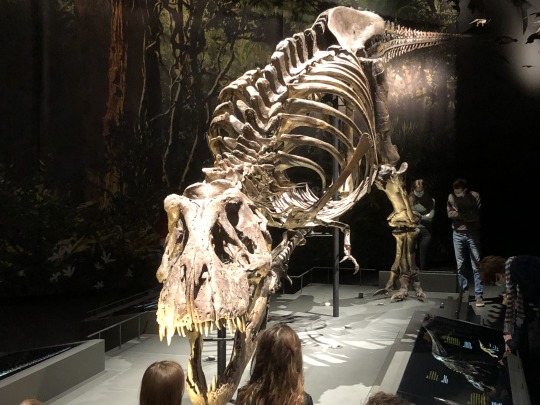
This is Trix the T. rex. I saw her in the Naturalis natural history museum. She lived and died 67 million years ago. Now, it is very easy for me to see that date and be filled with a sense of impending disaster. ‘Just before the end’ is a thought that quickly appears. But when you really think about it, that’s ludicrous. Trix lived her life, and then after she died her species continued to thrive for a million years. There’s thrice as much time between her and the Tyrannosauruses who died in the K-Pg extinction as there is between me and the first members of my species! And as for the thousands of years of recorded human history, those are a mere drop in that sea of time. Those years didn’t pass any faster back then than they do now, nor were they any less real. There were just as many moments in any one of those thousand millennia between Trix and the meteorite as there were in the millennium between me and Basil the Bulgar-slayer. If a wizard told you your species and your world would continue to thrive for a million years before eventually most of your clade would get wiped out by a terrible catastrophe, would you see your world as a doomed and temporary one about to go over a precipice? I think I would be delighted to know we have such a vast sea of time left.
This got longer and more philosophical than I expected, but the point is that I love the focus on the Maastrichtian as a diverse, living world, rather than the last age of the Mesozoic. We don’t know whether Prehistoric Planet is set a million, fifty thousand, or nine hundred years before impact, and it doesn’t really matter either. Even though all those dates are, geologically speaking, so close to the end of the Cretaceous we could barely tell the difference between them, they all have more time left than any of the animals can possibly conceive of. None of the animals we see in Prehistoric Planet have ever seen a Stegosaurus, and none of them will die as a consequence of a meteorite striking the Earth.
2,317 notes - Posted May 26, 2022
My #1 post of 2022
Alador: “So, Mittens, how did you and Luz meet anyway?”
Amity: “Well, I spotted her hiding in a cauldron covered in abomination goop and-”
Alador: *sighs* “How romantic, it was always my dream to meet someone like that...”
3,252 notes - Posted May 23, 2022
Get your Tumblr 2022 Year in Review →
#tumblr2022#year in review#my 2022 tumblr year in review#your tumblr year in review#Hey i finally figured out how to do this thing#turns out there’s a link at the bottom of the posts#also look at how close the dates on my top 4 posts are#i peaked at the end of may 2022
2 notes
·
View notes
Note
what is prehistoric planet!! im not really into dinosaurs (? but i saw some cool crechers im intrigued
it's a five-episodes long documentary series produced by the bbc and narrated by david attenborough available on apple tv+ (tho i've been streaming it illegally, lol) ! it follows the life of dinosaurs and other prehistoric animals, it's super cool. you should give it a try :D 💕
5 notes
·
View notes